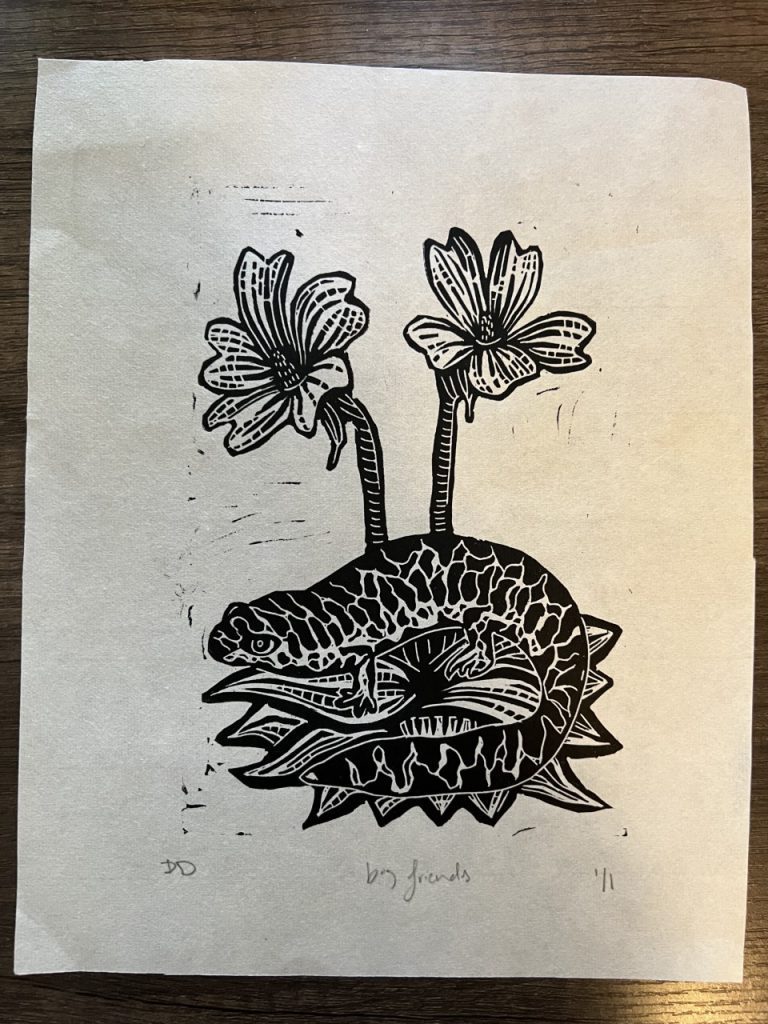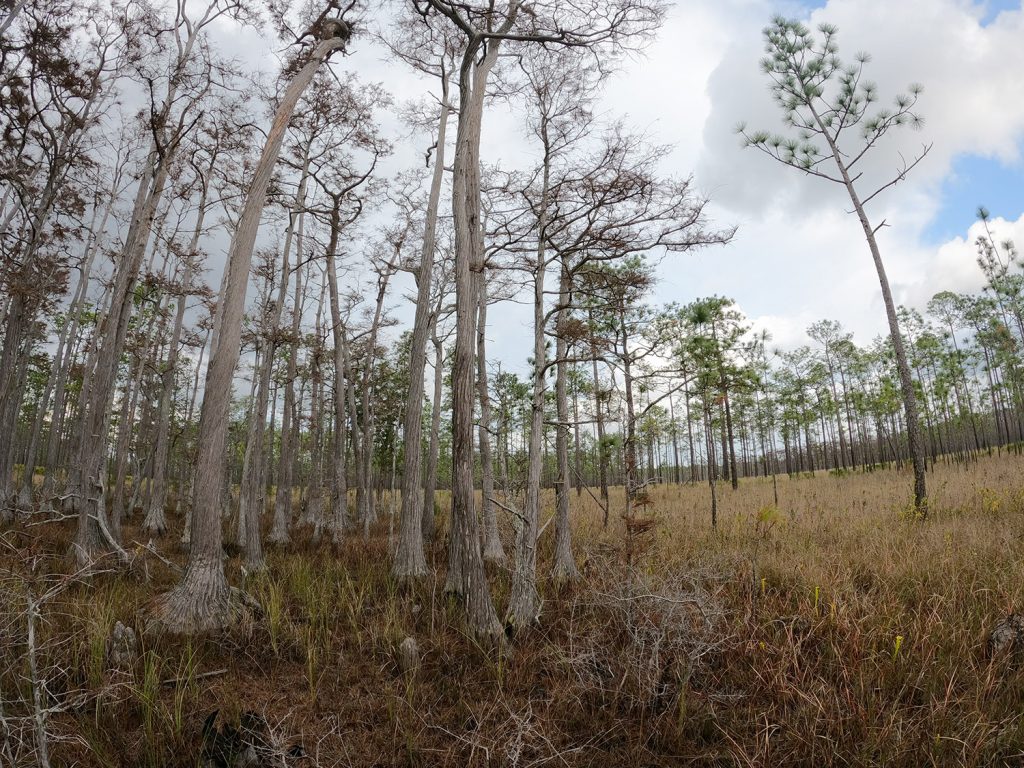Crouching in the rain, searching for eggs
The dark sky finally opened up, and rain began falling on us as we crouched down in the wet grass, searching for frosted flatwoods salamander eggs. I hear the pitter-patter of raindrops bouncing off of my backpack as I watch Pierson Hill, a biologist for the Florida Fish and Wildlife Conservation Commission (FWC), carefully extract a cluster of small, shiny eggs. He carefully places the clutch in a plastic sweater box that had been filled with soft, wet mud and presses the outside of the cluster down into the mud to keep them from sliding around during the trip back to the lab. Looking closely, I can see the embryos of baby salamanders wriggling around in the eggs.
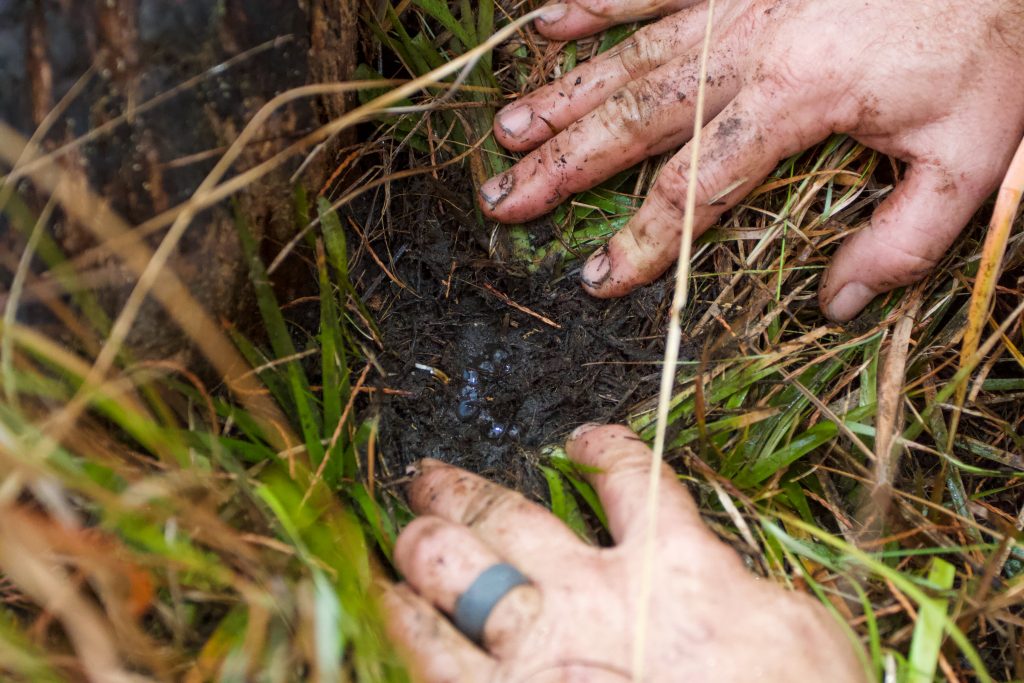
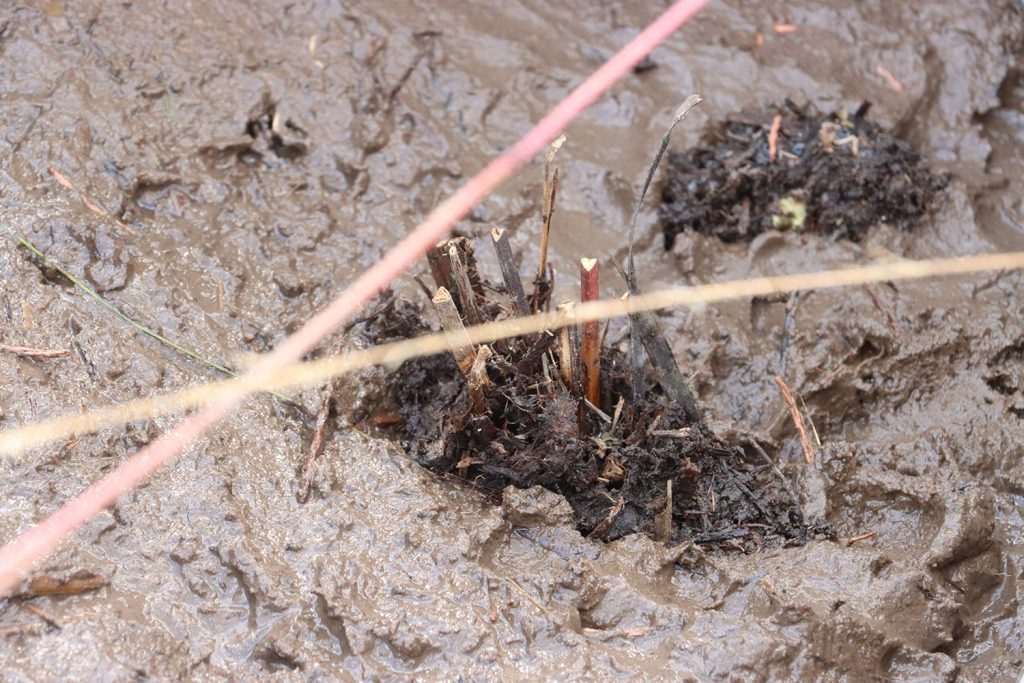
Our visit is not the first trip to this pond. Pierson repeats this process tirelessly with a team of field technicians who spend the entire egg-laying season (late fall) crouched in the grass, looking for eggs. Many days are spent in the mud, dodging annoyed cottonmouths, bent over with your face in the grass. Once eggs are eventually found, they are carefully cut away from the vegetation and carefully moved into safekeeping. This is not easy work and requires a lot of time and energy – for a single salamander species. How important, rare, or valuable must a species be to prompt this level of dedication?

From hundreds of thousands to a few hundred
“150 years ago, they were probably in hundreds of wetlands out here, and there were hundreds of thousands of them” Pierson calls out while carefully sifting through the grass for eggs.
Now, there are only a couple of areas where frosted flatwoods salamanders are still found. Populations of salamanders are mostly spread between St. Marks National Wildlife Refuge and the Apalachicola National Forest (ANF), where their numbers are critically low. Pierson believes that 100 – 500 salamanders are left in ANF, with maybe as few as 30 – 60 mature, egg-laying females. With the population at such low numbers, the frosted flatwoods salamander is considered “functionally extinct .” This term is used when a species is still present in its natural habitat but is no longer filling its role in the ecosystem.
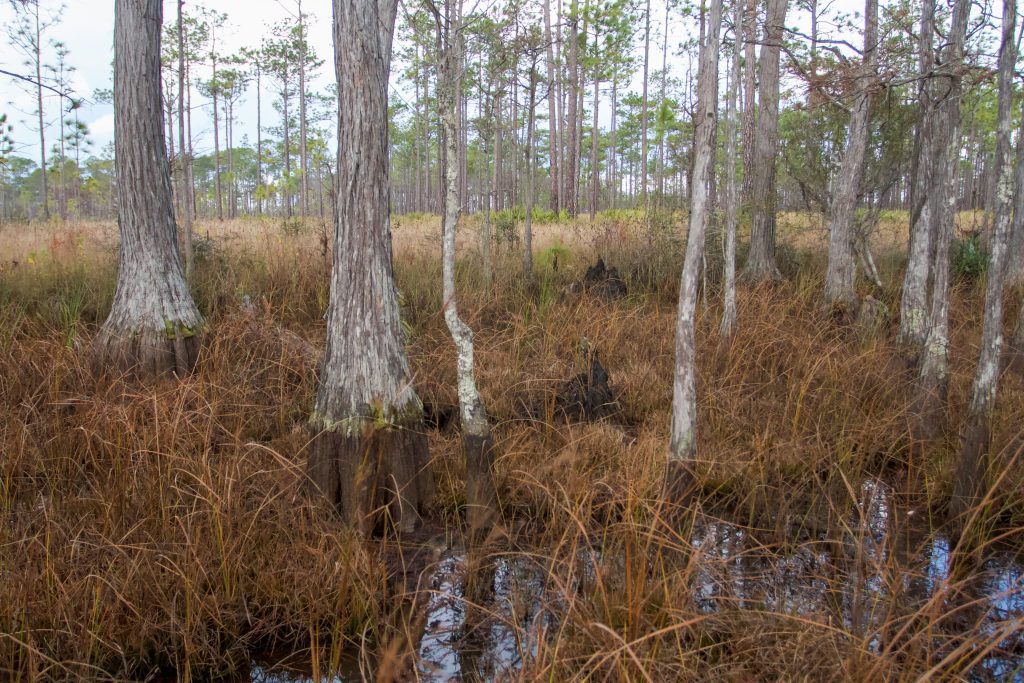
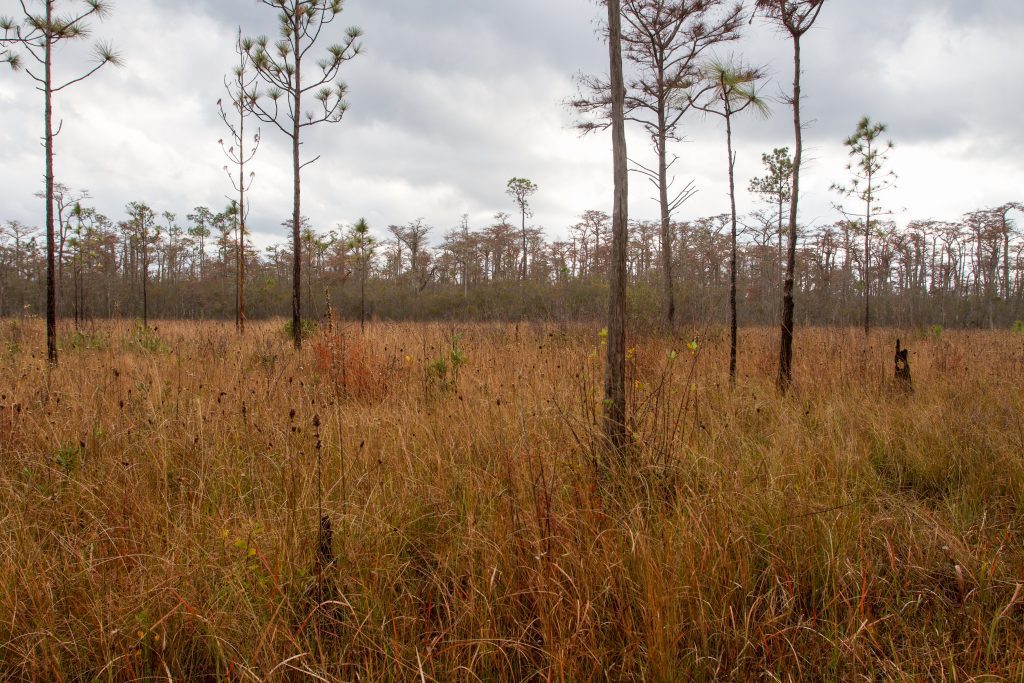
Fire is absolutely critical
Their decline follows the decline of many of our threatened and endangered species in the Apalachicola Lowlands ecoregion, a loss of frequent, growing-season fire on the landscape. Traditionally, a large portion of the southeastern Coastal Plain, including the habitat range of the frosted flatwood salamander, burned every few years during seasonal fires. These periodic fires would have occurred most often in the summer when large thunderstorms roll through the landscape bringing fire-igniting lightning.
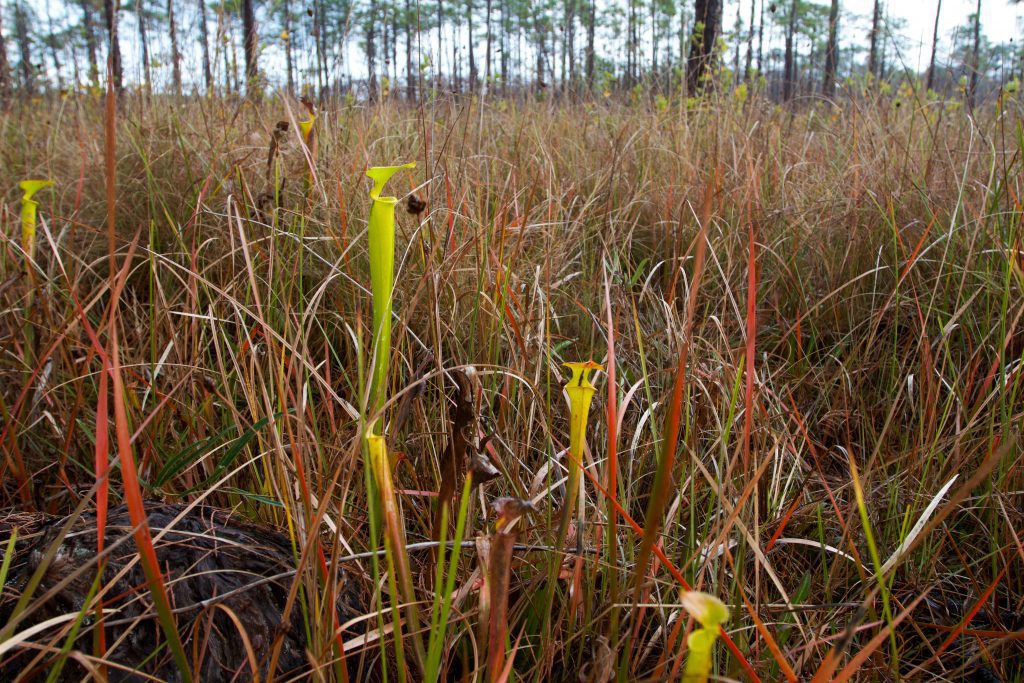
Unlike the devastating fires that we hear about in the western United States, these fires would have been low-burning fires that would sweep through the forest floor, burning up the low-growing plants. This seasonal fire cycle leads to an ecoregion full of plant and animal species specially adapted to fire. The flatwoods salamander, the ponds they rely on, and the plants where they hide their eggs all depend on fire to create an open, wetland habitat.
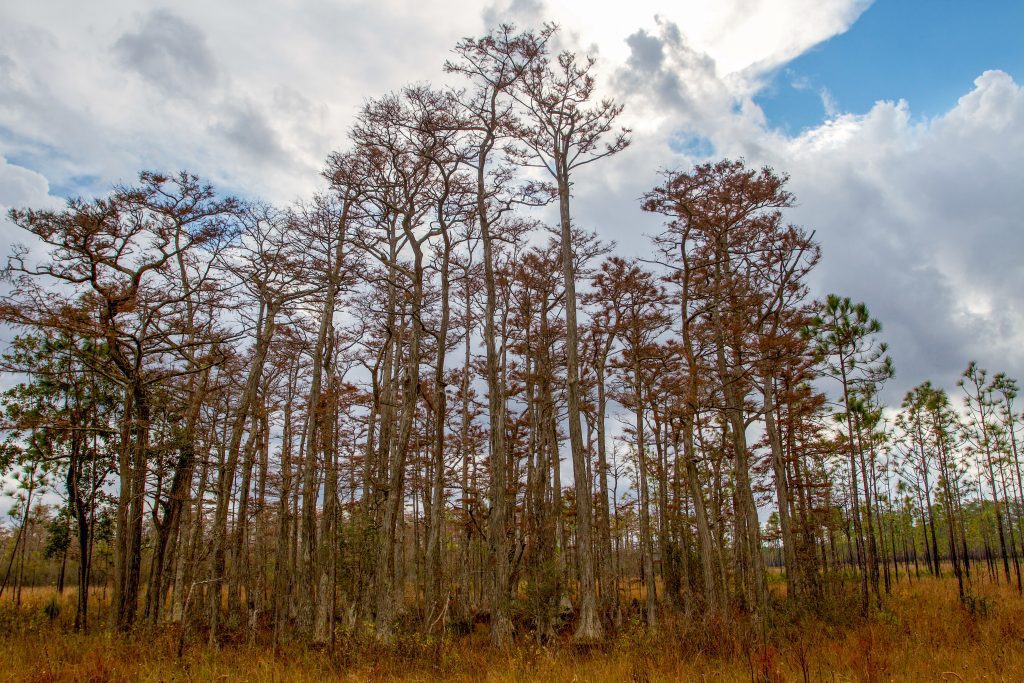
The importance of fire has been recognized in Apalachicola National Forest, and prescribed fire, a controlled fire set by people for habitat improvement, has helped restore some of these habitats. However, there is a problem here for the wetlands. Prescribed fires typically occur in the winter, when the ponds are full of water, rather than in the summer when the wetlands are dry – leading to a cycle where wetlands don’t burn. This leads to a shift in the wetland plant community, from the grasses that salamanders rely on to shrubby thickets.
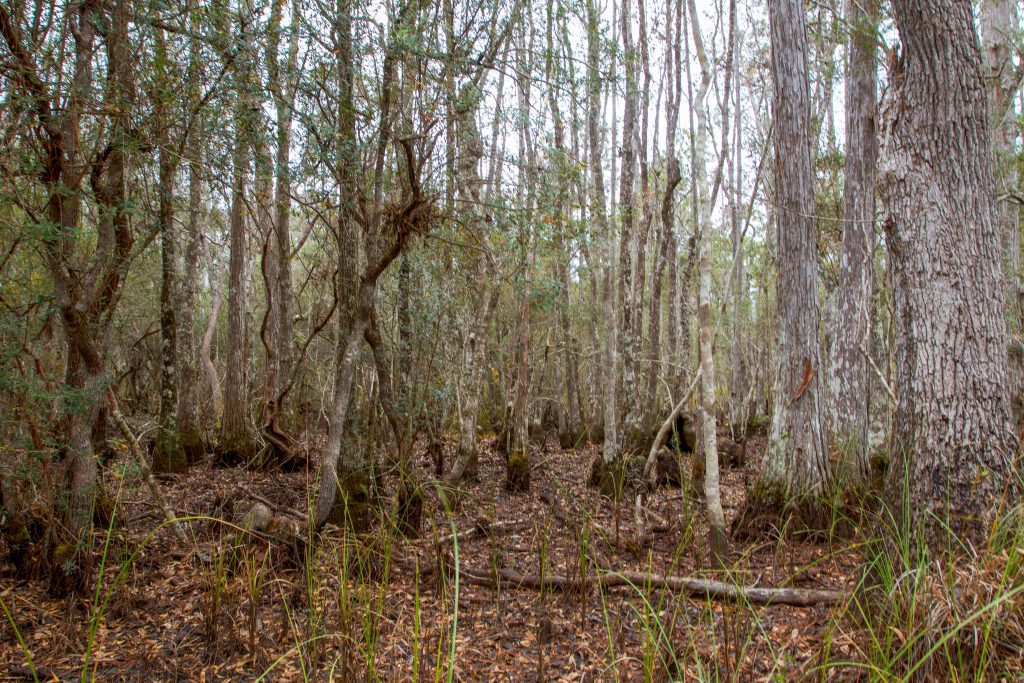
“Prescribed fires have almost completely replaced natural fires, and prescribed fires are not performed at the same frequency, intensity, and seasonality as wildfires,” Pierson explains, “what the forest service has been doing in partnership with FWC and The Nature Conservancy is getting contract crews to come into these ponds and do mechanical restoration… they hack out the understory shrub and midstory hardwood layer, and they haul it out into the surrounding uplands”.
This mechanical restoration helps restore these wetlands to a state where fire can easily move through them, producing the ideal habitat for salamanders. The plight of the salamanders doesn’t end there, though.
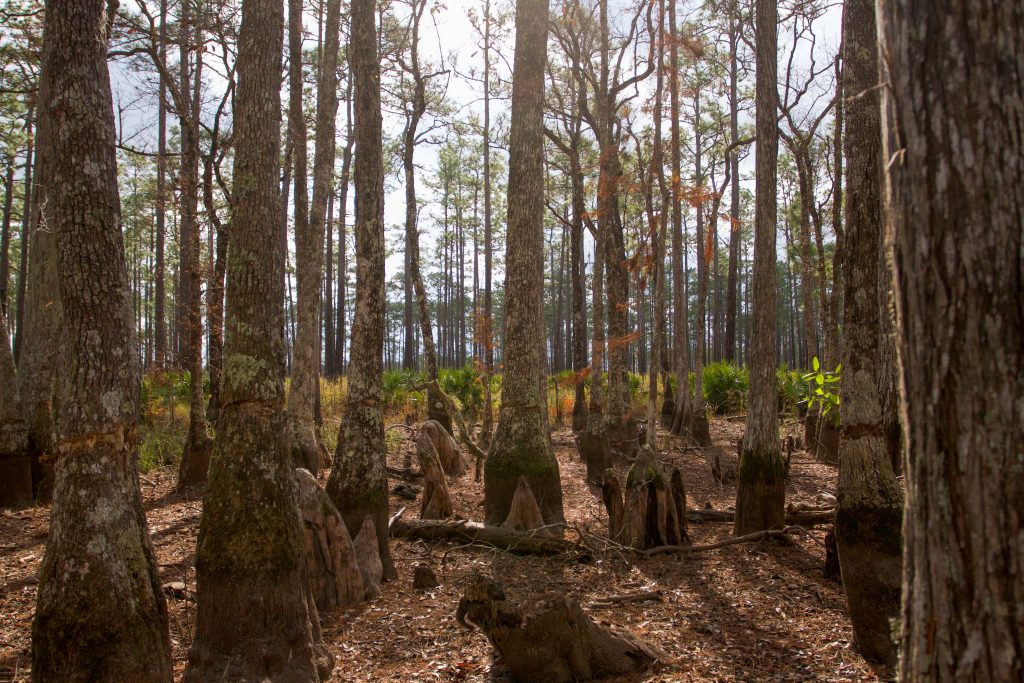
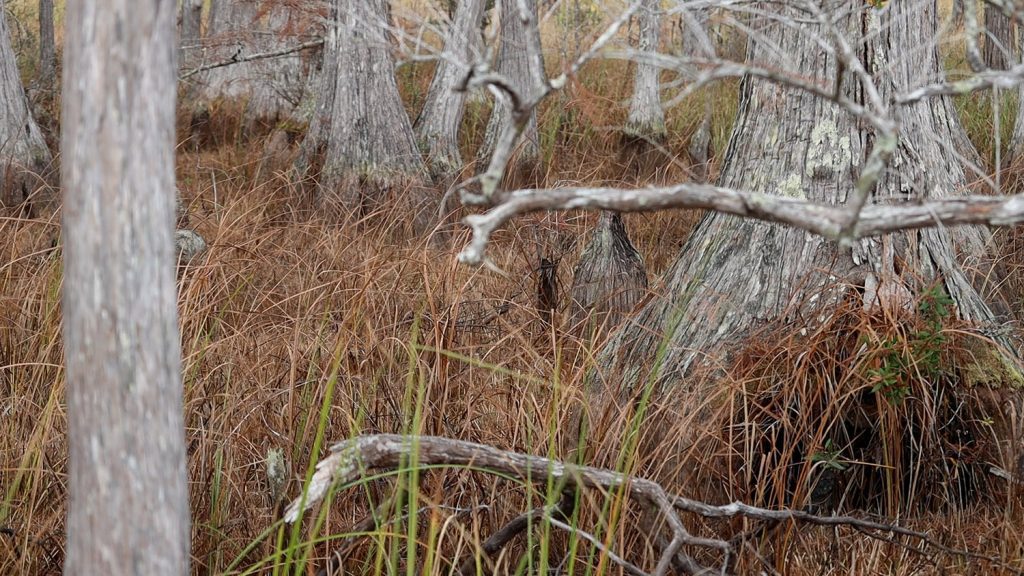
Extreme swings in weather patterns are making things more difficult
While crouching in the grass searching for eggs in the light fall rain, Pierson continues, “with all of the habitat restoration going on, these ponds are becoming better and better, but salamanders are still not responding due to weather.”
The salamanders evolved in a climate where we would have a dry fall, leading to the drying of the ponds that removes any fish that would compete or eat the salamander and a wet winter. What we’re seeing though, is extremes in weather. Where ponds never dry down leading to ponds that become dominated by fish communities, or where droughts lead to no water in the wetlands. The culprit? Climate change.
We can’t expect the weather to be less erratic, climate change isn’t going away, but through programs like FWC’s frosted flatwoods salamander program, we can slow the extinction rate and, hopefully, establish more populations.
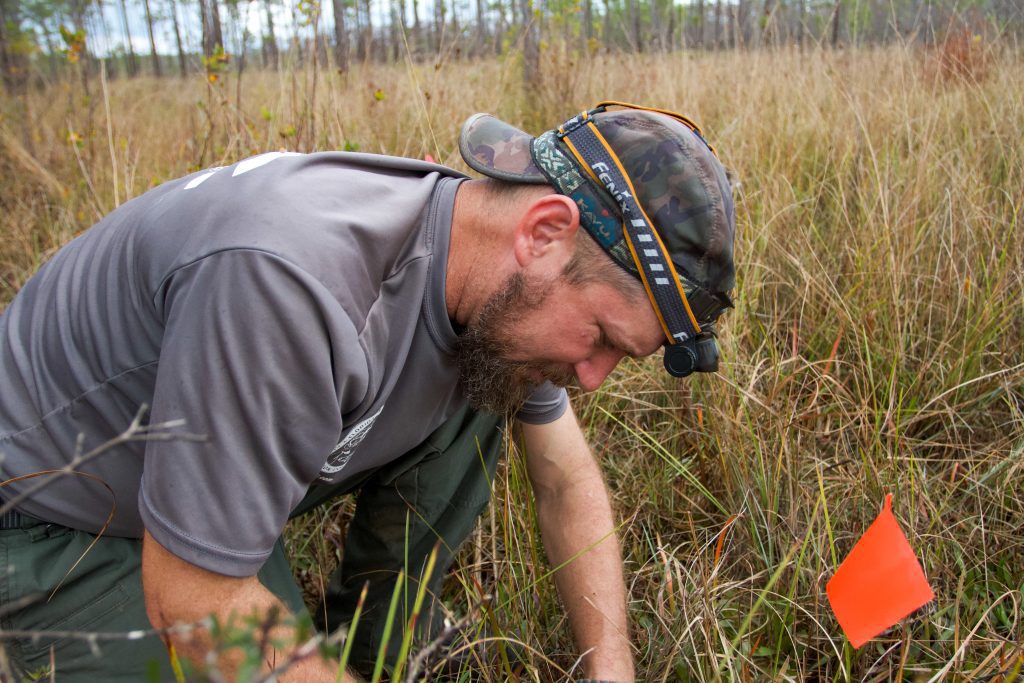
Giving frosted flatwoods salamanders a head start
While continuing to sift through soft grasses, Pierson explains, “Minimally we can prevent the eggs from drying up and dying if it’s a bust year.” There is a lot stacked against the frosted flatwoods salamander, but this is why Pierson and his crew spend hours in the field, bent over, searching for eggs of the frosted flatwoods salamander, and months tending to them in small, protected pools.
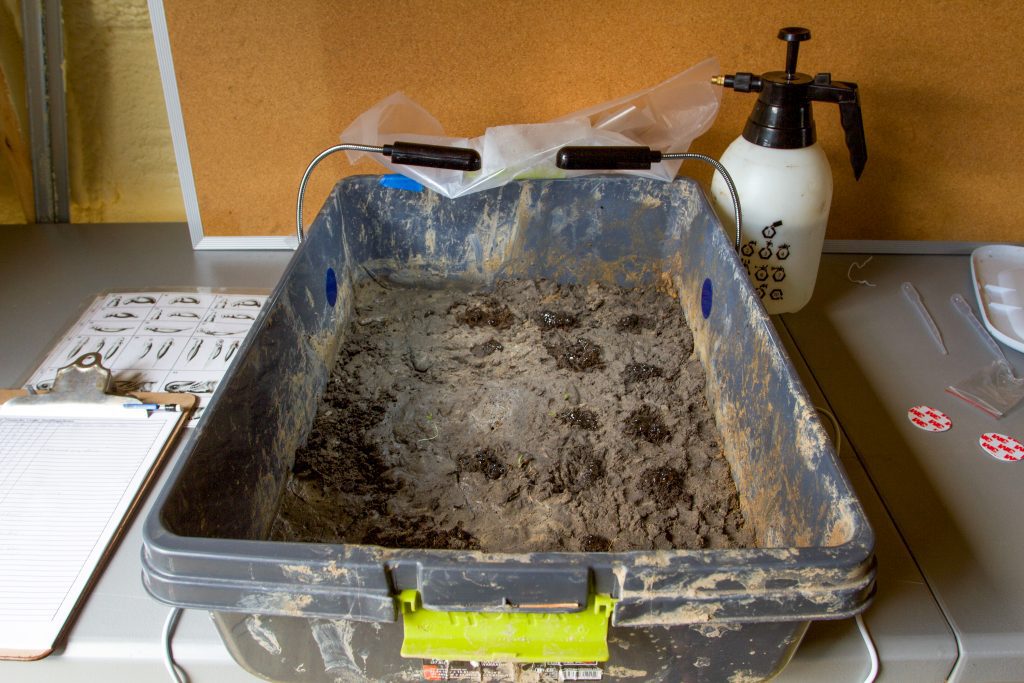
Salamander eggs are collected and moved to the USFS workstation near Bristol as a part of the FWC “head-starting” program. The idea of head-starting a species is to protect them during their most vulnerable life stage, for the frosted flatwoods salamander; that’s when they’re larvae. Salamanders go through a few stages; starting as eggs, they hatch out to become aquatic larval salamanders, complete with gills, and then metamorphose into air-breathing adults after a few months.
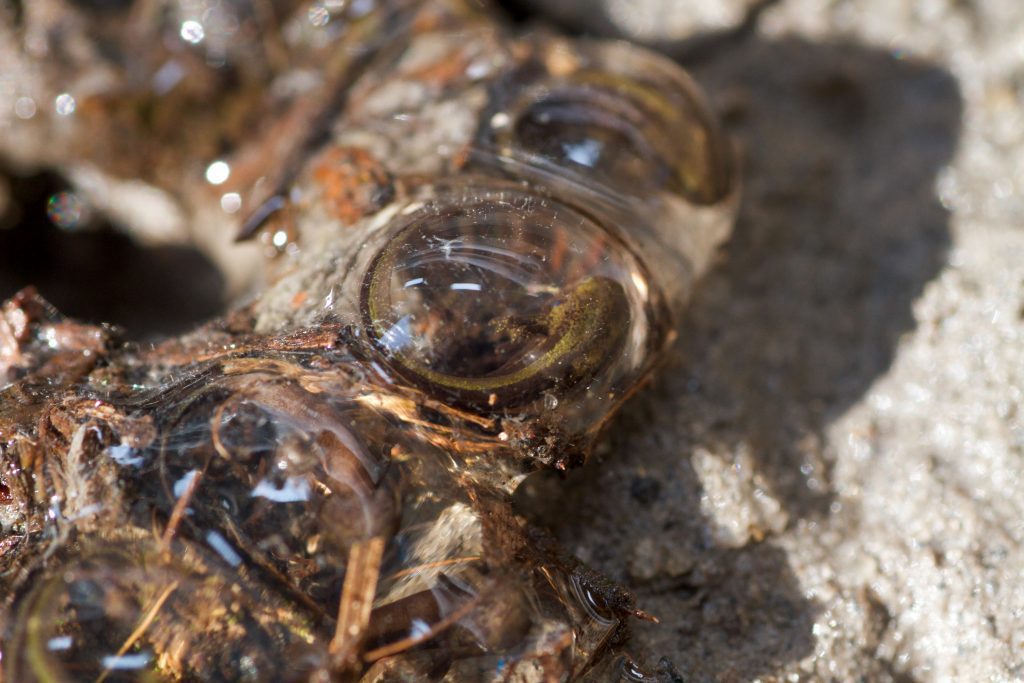
Protected ponds provide a safe place for salamanders to grow up
Once adults, the salamanders’ black and white speckled color helps them blend in with the soft, wet soil where they hide from predators. The larval salamanders also have camouflage coloring; their bodies are striped with tans and browns to blend in with the grass but are much more vulnerable to being eaten. As larvae, they’re confined to the water where wading birds and raccoons will happily gobble them up. The salamanders are protected during this vulnerable stage through the head-starting program, helping to ensure many of the larval salamanders make it to adulthood.
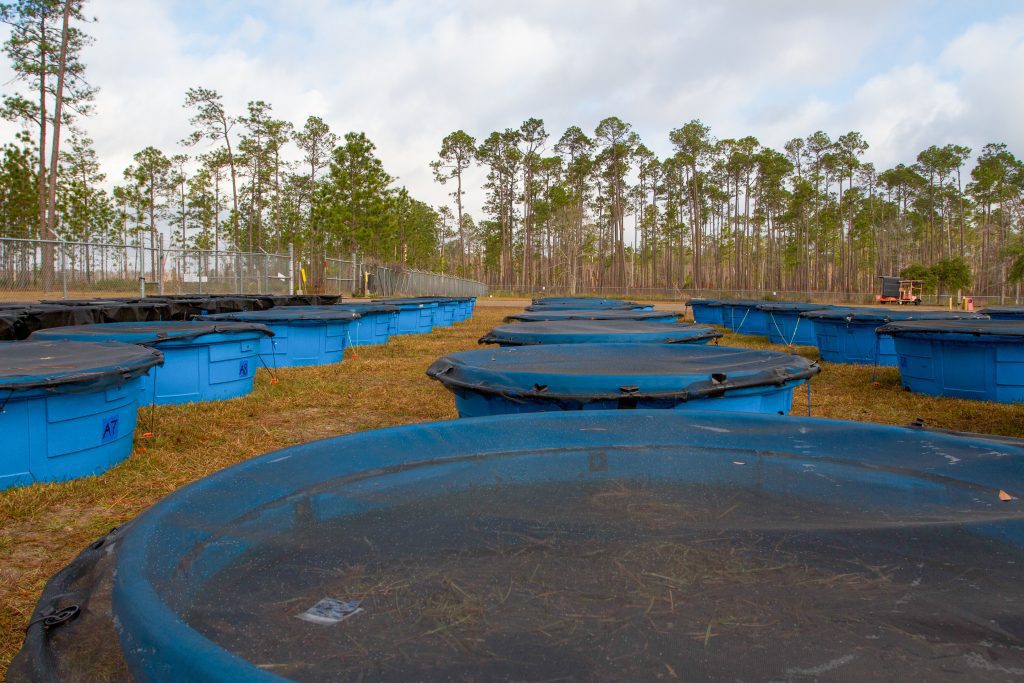
Ponds, also called “mesocosms”, are filled with grasses and support a food web of tiny creatures that will eventually feed hungry larval salamanders.
In their natural habitat, the eggs would hatch as the rains picked up in the winter – as being immersed in water signals the egg that it is time to open up. Instead of relying on rains in the head-starting program, the team has an array of large pools set up, complete with its own ecosystem, ready to receive (and feed!) newborn salamanders. Once the eggs collected from the field are ready to hatch, Pierson and his team plops them into the salamander-ready pools. Just like in the wild, the water spurs the eggs to hatch and out pop larval salamanders. The larval salamanders then spend the next few months (usually about January – April) in the pools until they transform into air-breathing adults.
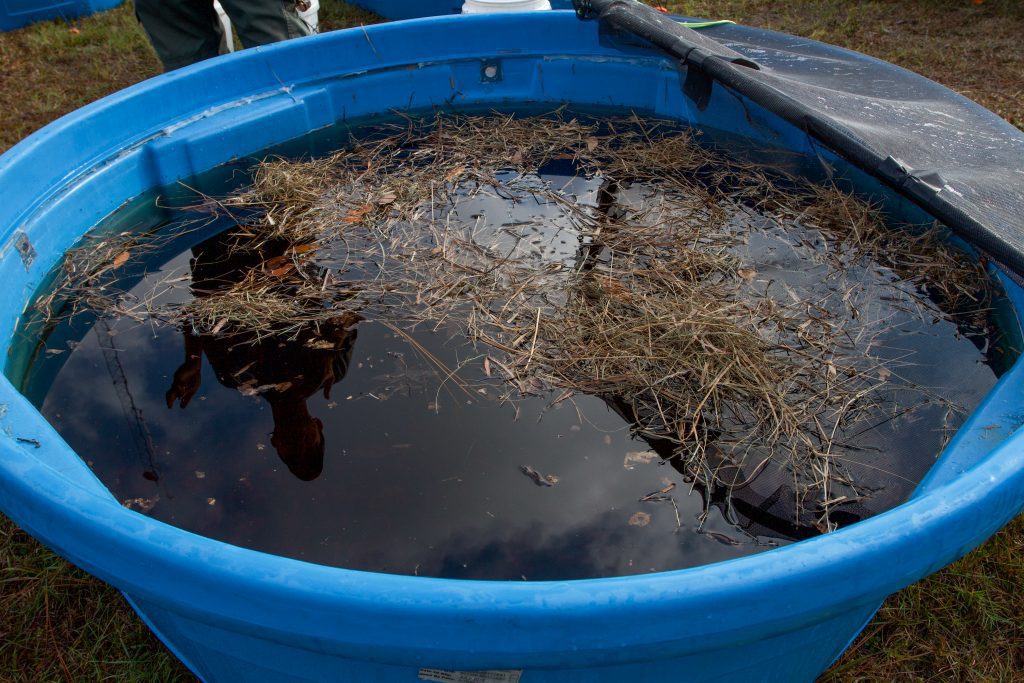
Climate change is throwing a wrench into recovery efforts
In most years, Pierson and his crew release the salamanders either as large larvae or as freshly transformed adults. This year, things have been different. Because of erratic weather patterns during the egg-laying period, when the ponds were overflowing, the salamanders laid their eggs farther upslope than usual. This made egg finding extremely difficult, and significantly fewer eggs were collected than expected – only about 300. To make matters worse, these 300 individuals were cut down to about 100 due to contaminated equipment, which the FWC crew was unaware of until it was too late.
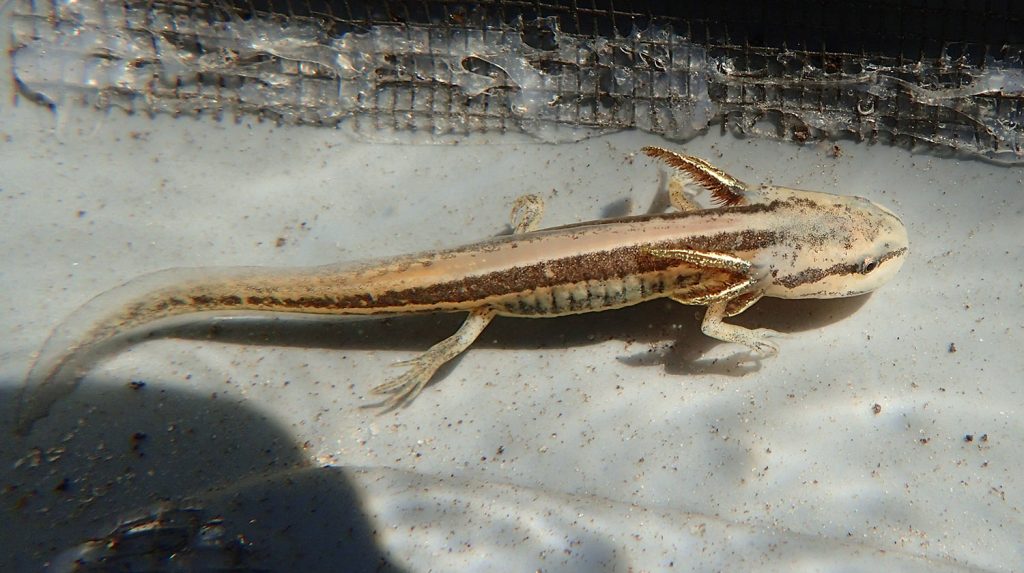
There is a ray of hope here, though. For the first time, frosted flatwoods salamanders were bred in captivity at the Amphibian Foundation in Atlanta, Georgia. This is a huge step forward for the conservation of this species as captive-bred individuals can be released onto the landscape to bolster and establish new populations of flatwoods salamanders. With this in mind, Pierson has decided not to release the 100 individuals – but to instead send these salamanders to partner organizations that can rear them for captive breeding.
Redundant populations, and a strong network of passionate people, are necessary for salamander recovery
Pierson stresses the importance of what conservation biologists call “redundancy.” This essentially means that there are more populations on the landscape to ensure that the extinction of one population doesn’t lead to the species’ demise. Redundancy, multiple populations, is critical for a species threatened by a constant threat – like climate change. Establishing various frosted flatwoods salamander populations across its historical range, the coastal plains of the southeast, would ensure that there would be backup populations to ensure that the entire species doesn’t go extinct because of an erratic rainfall year in one region. Captive-bred salamanders could be the key to establishing these redundant populations.
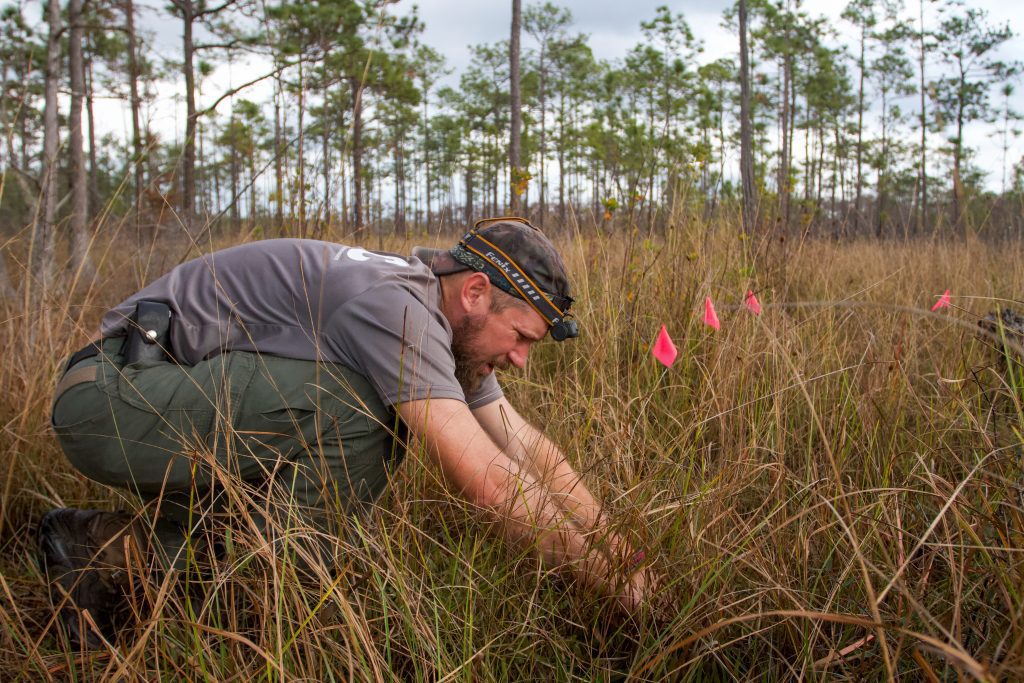
The path forward won’t be easy, but through the dedication of biologists like Pierson and the partner organizations he works with – the frosted flatwoods salamander stands a chance of reestablishing in the fire-maintained wetlands that they call home. It will take the cooperation of a vast network of individuals. Still, with so many passionate people fighting to protect this species, steps are being taken to prevent the total extinction of this incredible member of our forests.
